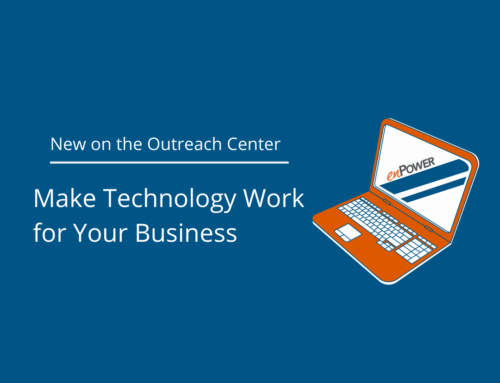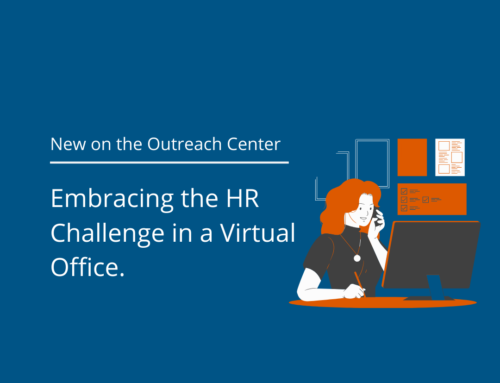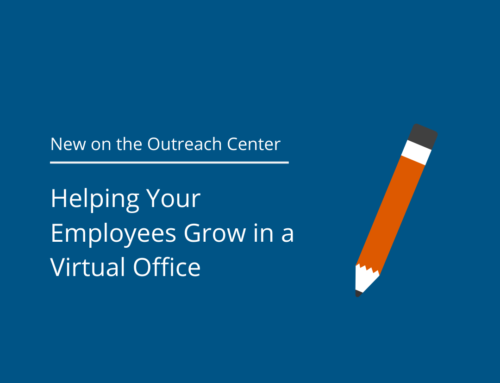As it becomes clear that many companies are looking at a prolonged work-from-home status, some may be mulling over the possibility of embracing the virtual office permanently. At least if you close your physical doors and turn off the lights, you’ll save money, right?
Maybe. But shifting to a virtual office involves more than just the cost of company tissues. There are challenges and perceptions to overcome, technology considerations to be addressed, communication, and trust issues – it’s a different way overall of approaching your business culture. But different doesn’t have to mean bad. It just means doing a little strategizing and taking an alternative approach to some things.
Today’s Focus: Factors to Consider Before Becoming a Virtual Office.
It sounds great, doesn’t it? No more commutes. No more fluorescent lights. No more burned popcorn smells coming from the staff room. But before you tell your team that working in pajamas is going to become the norm, take some time to plan. As a business, ask:
Why?
Outside of there being a pandemic, why are you looking to make this move? Maybe it’s because you want your people to have more autonomy and flexibility. Maybe you feel you could increase your talent with the money previously dedicated to rent or utilities. Whatever the why, just make sure you (and your business as a whole) understand it.
What Does it Look Like?
Will everyone be working from home or will it only be certain positions? If a split workforce, how will you deal with the dichotomy between your virtual workers and those still present in the office? Will those who work from home be required to sometimes come into the office? What will the company’s requirements be regarding the workspace? Technology? Schedules?
Can We Afford It?
Wait, what? Aren’t we saving on electricity? Well yes, most likely you will be, but now there are some other costs. You might need to provide your team with security devices. You might need to invest in online communication platforms. There might need to be a mileage budget or stipends for internet. Make a list of the costs that will be associated with no longer having physical space.
So, What About the Technology?
We’ve all learned over the past few months how key technology is, but to switch over permanently to a virtual office model, longer-term technology considerations must be made. Our team has our hands in all things IT all day long, but even this part isn’t always easy for us. When setting up an intentional  virtual office, it’s more than just, “Does Susie have a laptop she can use to work?” More defined setups will be required. Consider:
virtual office, it’s more than just, “Does Susie have a laptop she can use to work?” More defined setups will be required. Consider:
- Will you provide firewalls? How about wireless?
- Will people need printers? Scanners?
- Are you already set up in the cloud?
- How will you protect data? Are compliance requirements an issue?
- Will employees need phones? Webcams?
- What communication platforms will your teams utilize to collaborate on projects?
- Will someone in IT go out to each employee’s home office to help get things going?
Technology is a big beast. If going virtual, make sure you are ready to tackle it.
How Will We Handle the “Little Things”?
This is a big one that’s often overlooked. Business has been conducted for so long in physical spaces that there are just some things we take for granted that will have to be handled if shifting to a virtual office.
- Where will you put your labor law posters?
- Will you provide allowances for toner? For cell phones? For sticky notes?
- Where/how will client meetings take place? Will you have background and dress requirements for your team?
- Where will you “hang” your company values?
- How will you handle employee onboarding? Terminations?
- What will you do for team building?
- How will you store employee records?
- How will you ensure safe disposal of data?
- What policies will you have to change/update?
These are only a few top-level considerations. There’s a lot of minutiae in an office. Consider polling your team – each person will have a different take on things. Rob at reception will remind you that UPS needs somewhere to drop off packages and Betty in records might have an idea of what to do with 20-years’ worth of color-coded files.
Also, make sure to bring HR in as early as possible. If there’s one area that’s going to have be handled differently, it’s human resources. Employees in multiple locations, adjusted work schedules, performance evaluations from afar … your HR Director is probably already having heart palpitations, so be sure to work closely with her.
What Will You Do with the Stuff?
Anyone who has ever moved understands just how much stuff we accumulate over the years. Closets filled with office supplies you’d long forgotten about. Filing cabinets with files that can’t yet be destroyed but are also not relevant for daily work. That sad-looking potted fern that sits in the breakroom. Office furniture can be sold, but some of these other things are going to be harder to relocate.
Will This Make My Employees Happy, Productive Workers?
Yes, the choice is ultimately up to the business, but remember, happy workers are generally better workers, so don’t discount the opinions of your employees. Before the pandemic, most everyone in the office would have likely raised their hands if asked who wanted to work from home. Attend meetings in sweats? Bring My Cat to Work Day every day? What’s not to love?
But, now that many of us are coping with Zoom-fatigue and have found that Fluffy is more of a hinderance than a help to productivity, the team might not be quite as thrilled to learn they’re working from home forever. Be deliberate in your approach, but consider your employees’ perceptions and feelings as you make your final decision.
The Virtual Office Can Be a Thing of Beauty
With planning and consideration, virtual offices can be great. We are one, and we love it. And we think others will, too. If this is the direction you’re headed, and you have questions, we’d be happy to chat. From the comfort of our easy chairs.





